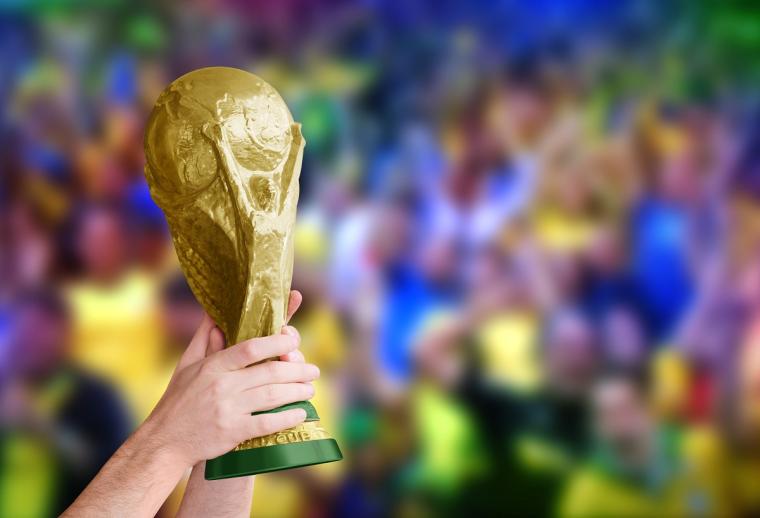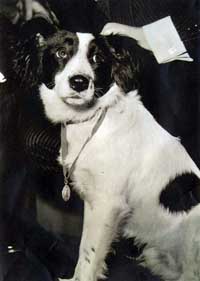
The 2026 World Cup will mark not just a three-nation hosting of the event but also the 60th anniversary of one of the strangest chapters in FIFA history.
In 1966, the venerable World Cup trophy was stolen from a special event venue in England, the host nation for the tournament that year. A mad scramble ensued to retrieve the trophy (and make no mistake, it was mad; it approached the level of Keystone Cops in its depth and breadth of ineptitude). But the finder was a mixed-breed dog named Pickles.
And the culprit was identified five decades later by a newspaper reporter. And it turns out the culprit's family and friends knew all about it.
Oh, and that wasn’t the only time the trophy has been stolen.
The bizarre story started when FIFA entrusted the trophy to England in advance of the 1966 tournament. According to The Washington Post, the trophy was put on display at Central Hall Westminster, in the heart of London, as the showpiece of a stamp exhibition.
And then, barely one day into the exhibition, the trophy vanished. Guards were clueless as to how it could have happened. “Nothing at all went wrong with our security,” said one, “the cup just got stolen.”
Actually, it happened while the trophy was unguarded, explains WaPo:
“The guards checked the trophy at 11 a.m. and then both guards on duty on the first floor sat in the office within the exhibition room, drinking their tea, while 200 people were attending a church service in the hall below. One guard, Frank Hudson, left the office at around 11:25 a.m. to go to the bathroom on the first-floor corridor near the exhibition area. He later reported seeing a man by the public telephone near the bathroom.
When Hudson came out a few minutes later, the man was still there, using the telephone. As this was in a publicly accessible part of the building, there was no immediate cause for suspicion. But when the guards next did their rounds to check on the trophy at about 12:10 p.m., they found that the case had been forced open and the trophy was gone. A quick search revealed that the rear doors to the building had been forced open.”
And the trophy is no ordinary display piece, adds History Today: “The solid silver trophy, covered in gold plate and with a lapis lazuli plinth, had been made in 1930, and between competitions was kept by representatives of the country that had last won it. Fun fact: During the Second World War, the trophy was hidden by FIFA vice-president Ottorino Barrassi, president of the Italian Football Association. Italy had won the trophy in 1938, and to protect it from theft during the last days of Italy’s involvement in the war, Barrassi placed it in a shoebox which he kept hidden under his bed.”
Three decades later, in the 1960s, security measures still were not exactly top-notch. There were no video surveillance cameras, no metal detectors and of course, no facial recognition technology. The one and only clue Scotland Yard had to go on, said The Washington Post, was that “a suspicious-looking man” had been seen exiting the hall minutes before the cup’s absence was noticed. He was described as “early 30s, of average height with thin lips, greased black hair and a possible scar on his face.”
It didn’t do a stellar job of narrowing the field.
The day after the theft, Joe Mears, chairman of the Football Association, and of Chelsea Football Club, received an anonymous call, which was quickly followed by a ransom demand of $5,000. The caller told Mears that he wanted to meet in order to exchange the cup for the money. If police were involved or if reporters tried to interfere, the trophy would be melted down.
Mears wanted to attend the meeting but had chest pains and a plainclothes police officer (who looked nothing like Mears) came in his place. The suspect who attended the meeting panicked when police began (not subtly) moving in. (Translation: They began following the police officer and suspect in a marked police van.) The suspect tried to flee but was arrested after a brief chase; however, the trophy was not on his person, and the suspect claimed he had been working with the man who had taken it – although he did not know who that was, or where the cup was. (The suspect offered a plea bargain, saying he'd lead the police to the thief but police simply incarcerated him without following up.)
FIFA was furious and, according to Egypt Today, England, its police force, the security guards at the exhibit (and basically everyone associated with the event) became an international laughingstock. A sports official from Brazil, the country that at that time had won two World Cups, added insult to injury, describing the theft as “a sacrilege that could not have been committed in Brazil” because Brazilian gangs held soccer in such high regard. Mears lost his job as a result of the mess.
And with the calendar moving toward the World Cup, when the trophy would need to be awarded, things were getting desperate. Even Scotland Yard had come up empty-handed. A duplicate trophy was made up in secret.

But that duplicate wasn’t needed because exactly one week after the heist, the impossible happened. A man named David Corbett was walking his dog, Pickles, in the south end of London. Pickles began sniffing at something near a hedge that surrounded a house. Corbett went to pull the dog away and realized that what had caught Pickles’ attention was an oddly-shaped package wrapped in newspaper. The package appeared to have been thrown under the hedge and was all but invisible to passersby.
Corbett peeled back the newspaper and was shocked to find the World Cup trophy. He took it to the police (and was briefly considered as a suspect until he could show he was not in the area of the museum at the time of the theft). Corbett was a hero. Pickles was an even bigger hero. England also triumphed, winning the World Cup that year. Pickles was invited to the winners’ banquet, along with Corbett, and “took a wee in the elevator,” or so the story goes.
The actual thief of the World Cup trophy was eventually identified; however, it took several decades and an astute crime reporter to put all the pieces together:
“One day in 2017,” said Tom Pettifor, the crime editor at the British tabloid, the Mirror, “a contact of mine mentioned that they knew who had stolen” the World Cup trophy. The contact gave two clues: The culprit’s name was “Sidney Kew,” and he hailed from the “Walworth Road area” in South London, which, Pettifor knew, had been a crime-ridden area back in the day.
Pettifor pored over the police files from 1966 and realized that the first suspect “had been arrested very close to the Walworth area.” He thought, “there’s something to this tip-off.”
Eventually, Pettifor identified Sidney Kew. His full name was Sidney Cugullere, and he had been arrested multiple times throughout his life. He also fit the description of the man who had been seen leaving the exhibition after the heist.
Pettifor got in touch with Cugullere’s nephew, Gary, who confirmed “that his uncle had stolen the World Cup.” Gary also revealed Cugullere had died a few years earlier. At his funeral, the wreaths were made to resemble the World Cup trophy.
Obviously, the mysterious World Cup theft was not a mystery to Cugullere’s friends and family.
The story takes an even more bizarre twist, though, when Pettifor learned Cugullere’s original target was not the trophy. “I’ve been told by people who knew Cugullere, and they said he’d gone to Central Hall to case the stamps,” Pettifor said, adding that “the theft of stamps was a big thing in the 60s.”
The trophy, as it turned out, was simply the easiest thing to grab, and that’s what Cugullere did while the guards “were sitting in an annex having a cup of tea.”
You can’t make this stuff up. (The whole saga even became the subject of a documentary.)
But wait, there’s more. The World Cup trophy was stolen again – this time in 1983, in (ahem) Brazil – yes, the place where gangs love soccer too much to steal it. And this time, it was never found.
Too bad Pickles wasn’t around any longer.
P.S. FIFA continues to have its travails. The logo for the 2026 World Cup has been released and everyone apparently hates it.

